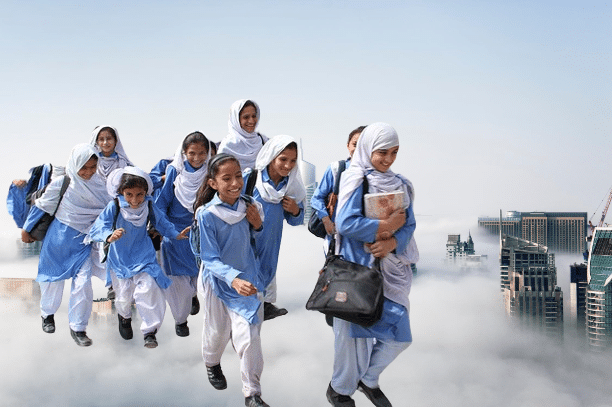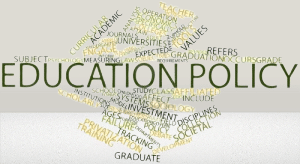The Importance Of Education And Effectiveness Of The Current Education Policy
This Effort Is Part II Of A Series.
Education is a fundamental and dominant instrument of socio-economic and political change related to global, economic, technological and democratic developments. Quality is a significant and critical dimension of an education system. It is necessary to improve the quality of education at different levels. It is that quality creating an environment where educators, parents, government officials, community representatives, and business leaders work together to provide students with the necessary resources they need to meet present and future academic, business and needs. The vitality of quality education has in fact, now is a universal call more so at the primary level.
The Current State of Education in Pakistan
Educational indicators of Pakistan are miserably below any South Asian country in the region. Although, steady progress has been noticed during the last few decades. At present, about one-third of primary school-age children are out of school, and 42% population (age 10+) is illiterate. Currently, Pakistan has the world’s second-highest number of out-of-school children (OOSC) with an estimated 22.8 million children aged 5-16 not attending school, representing 44 per cent of the total population in this age group(UNICEF). At the national level, about two-thirds women of aged 15+ cannot read and write, and 35% of girls remain out of school. The Gender Parity Index in the case of participation in primary education is 0.82. It is estimated that over 6.7 million children are out of school, and the majority of them (62%) are girls.
Statistics on enrolment rates
Pakistan’s population of children not in school (22.8 million children) is the second largest in the world after Nigeria. Wide discrepancies persist in education indicators about provinces/areas, location (urban vs. rural) and gender. Our net enrolment rate at the primary level decreased in 2020 to 64pc, then the ratio in 2015, which was 67pc. This is an unhealthy indicator needs urgent addressing. Among four of the provinces of Pakistan, Punjab and Baluchistan maintained their earlier statistics regarding Primary enrolment. Which is 70pc and 56pc respectively. Khyber Pukhtoon Khwa(KPK) lost 6pc ratio then that of 2015. It was 71pc decreased to 66pc in 2020. Sindh’s net enrolment went down from 61pc to 55pc. Half of all school-aged children are not in school.
Analysis of the Current Education Policies and Their Effectiveness
The Pakistan Education Policy of 2023
Focus on Access and Enrollment

To enhance the ratio of primary-level enrollment, the government of Pakistan has devised policies to increase access to education. The government has focused on building more schools, providing proper infrastructure and enhancing teacher training programmes. Building more schools his a tremendous impact on increasing the enrollment ratio at the primary level but the curve stagnated during the few years and in some provinces even went down.
The policy is a comprehensive document that outlines the direction of the education system in Pakistan. The policy aims to make education accessible, inclusive, and of high quality for all citizens. The key changes in the policy include an increased focus on early childhood education, a revamp of the curriculum to ensure that it is relevant to the current needs of society, and a focus on digital literacy.
promotion of inclusive education
Another important aspect of the policy is the promotion of inclusive education, which aims to ensure that all children, regardless of their background or abilities, have equal access to quality education. It also includes special education services for children with disabilities.
Teacher Training And Professional Development
The recent policy on education emphasises teachers’ training and skill development to equip them with the necessary art to deliver. For teachers to ensure they have the necessary resources, the policy aims to improve the quality of teaching by providing regular training opportunities for teachers and performing their jobs effectively.
Curriculum Reforms
There is a recognition that the curriculum plays a pivotal role in determining the quality of education. Recent policies have introduced reforms to modernize and align the curriculum with international standards. This includes incorporating subjects that are relevant to the evolving needs of the globalized world.
Technology Integration
To bring education in Pakistan on par with global standards, policies have been introduced to integrate technology into the learning process. This includes providing schools with digital resources and promoting e-learning initiatives.

Read Also: Education Realities In Pakistan: Confront With Social, Cultural Forces.Part I
Analysis of Policy Effectiveness
Over decades, Pakistan has been a hotbed for education reforms. After every five years, a new education policy framework is implemented whereas in other countries it is faced with bureaucratic hurdles and opposition from teacher’s unions. But still such reformed agendas, with slight improvements, are inadequate to bring sufficient progress. The failures of our education policy stick at the core. We will discuss the pitfalls of our education policies in the following.
The Myth Of Spending More On Education
Under the new policy, the federal and provincial governments together spend a huge sum of about Rs1,000 billion on education annually. That’s almost twice the cost of running the civilian federal government and by far the biggest item after defence and debt-servicing. But countries spending less per student have better educational outcomes than Pakistan. Creating a well-functioning educational Education Policy Reducing corruption, eliminating ghost schools, and ensuring teachers come to class would be welcome developments.
The stagnated Enrollment At The Primary Level
In 2020, our net enrolment rate in primary schools was only 64 per cent — down from 67pc in 2015.
Declining Standard Plagued The Education Sector
A study conducted by Aga Khan University across Pakistan showed that the average score of our students in science and mathematics was a failing grade. Only 5pc of the kids in Class 8 could answer a simple arithmetic question and just 10pc could answer a basic science question.
The Cham Between Traditional And Modern Education
One of the fundamental challenges in overcoming is Traditional education versus modern one. Understanding the broad meaning of traditional methods still working in our education sector while the changing needs of modern times is a cry of time highly needed to understand.
The Missing Critical Thinking
The big miss in our education policies is the substantial value of promoting critical thinking among students. Although, criticality doesn’t come solely from schools and colleges. Society at large plays a vital role in promoting critical thinking and experimental mentality.

Conclusion
In the context of Pakistan, where illiteracy roams large and the country is plagued with ideologies of radicalism and extremism, the importance of education can not be underestimated. The country’s economic skeleton greatly needs overhauling and a new direction where the significance of educated youth bulge is highly valuable. Education is the key to individual progress and societal hurdles to change the socio-cultural stigmas. Educational progress must be linked to producing skilled industrial mass that paves the way for economic prosperity in the country. Education becomes a powerful tool for addressing disparities and promoting inclusivity where socioeconomic disparities persist. Moreover, a well-educated population contributes significantly to the economic growth of the nation, fostering innovation, critical thinking, and problem-solving.
In essence, investing in education in Pakistan is an investment in the nation’s future. By providing quality education that is accessible to all, Pakistan can unlock the potential of its citizens, fostering a society that is informed, engaged, and equipped to meet the challenges of the 21st century.
Read Also: From Textbooks to Real World: How Modern Education is Preparing Students for Life
